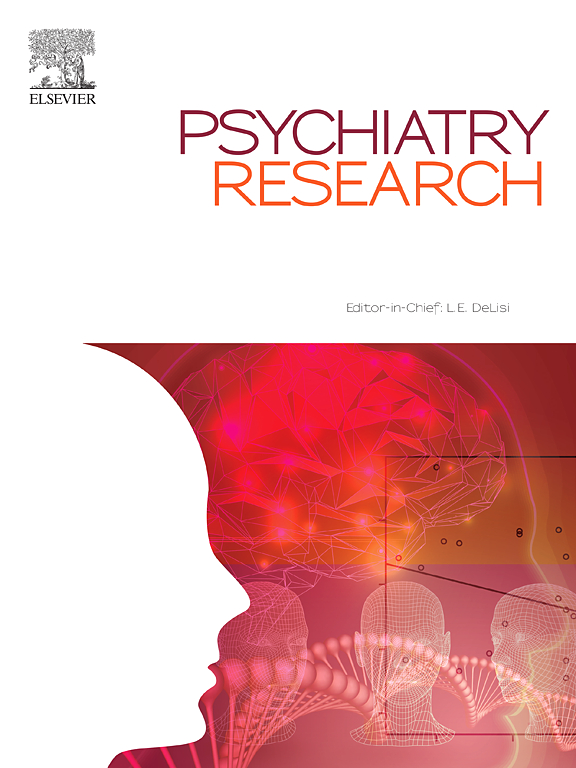创伤后应激障碍患者的分离性发作和并发心率--生态瞬间评估。
IF 4.2
2区 医学
Q1 PSYCHIATRY
引用次数: 0
摘要
分离症状是创伤后应激障碍的常见并发症,约占所有创伤后应激障碍患者的三分之一。虽然理论模型预测了创伤后分离期间的生理低唤醒,但缺乏经验证据。我们通过研究自发发生的分离症状和相关的心率变化在生态瞬间评估来解决这个问题。因此,我们用移动心电图连续测量47名诊断为创伤后应激障碍和分离症状的住院女性患者的心率5至10天。在此观察期间,患者在智能手机应用程序上跟踪每个分离事件,并报告症状特征。患者总共报告了164次分离事件。这些通常会持续下去本文章由计算机程序翻译,如有差异,请以英文原文为准。
Dissociative episodes and concurrent heart rate in patients with PTSD – An ecological momentary assessment
Dissociative symptoms are a frequent complication in posttraumatic stress disorders affecting about a third of all PTSD patients. While theoretical models predict a physiological hypoarousal during posttraumatic dissociations, empirical evidence is lacking. We addressed this by studying spontaneously occurring dissociative symptoms and related heart rate changes in an ecological momentary assessment. Therefore, we continuously measured heart rate for five to ten days with mobile ECG in 47 female inpatients diagnosed with posttraumatic stress disorder and dissociative symptoms. During this observation period, patients tracked each dissociative event on a smartphone app and reported on symptom characteristics.
Patients reported a total of 164 dissociative events. Those typically lasted <30 min and involved co-occuring depersonalization and derealization of moderate to severe intensity. Tracked symptoms correlated positively with some conventional self-reports for depersonalization and derealization. Heart rate during dissociative symptoms varied greatly between and within individuals and was on average not different from baseline assessment. There was also no significant relation between dissociation intensity and heart rate change.
These results challenge the theory of reactive hypoarousal during chronic dissociation and support the view that physiological adaptation modifies in the course of posttraumatic chronification. They also highlight the individual variability of dissociative symptoms and underscore the necessity of detailed assessment for targeted therapeutic approaches.
求助全文
通过发布文献求助,成功后即可免费获取论文全文。
去求助
来源期刊

Psychiatry Research
医学-精神病学
CiteScore
17.40
自引率
1.80%
发文量
527
审稿时长
57 days
期刊介绍:
Psychiatry Research offers swift publication of comprehensive research reports and reviews within the field of psychiatry.
The scope of the journal encompasses:
Biochemical, physiological, neuroanatomic, genetic, neurocognitive, and psychosocial determinants of psychiatric disorders.
Diagnostic assessments of psychiatric disorders.
Evaluations that pursue hypotheses about the cause or causes of psychiatric diseases.
Evaluations of pharmacologic and non-pharmacologic psychiatric treatments.
Basic neuroscience studies related to animal or neurochemical models for psychiatric disorders.
Methodological advances, such as instrumentation, clinical scales, and assays directly applicable to psychiatric research.
 求助内容:
求助内容: 应助结果提醒方式:
应助结果提醒方式:


